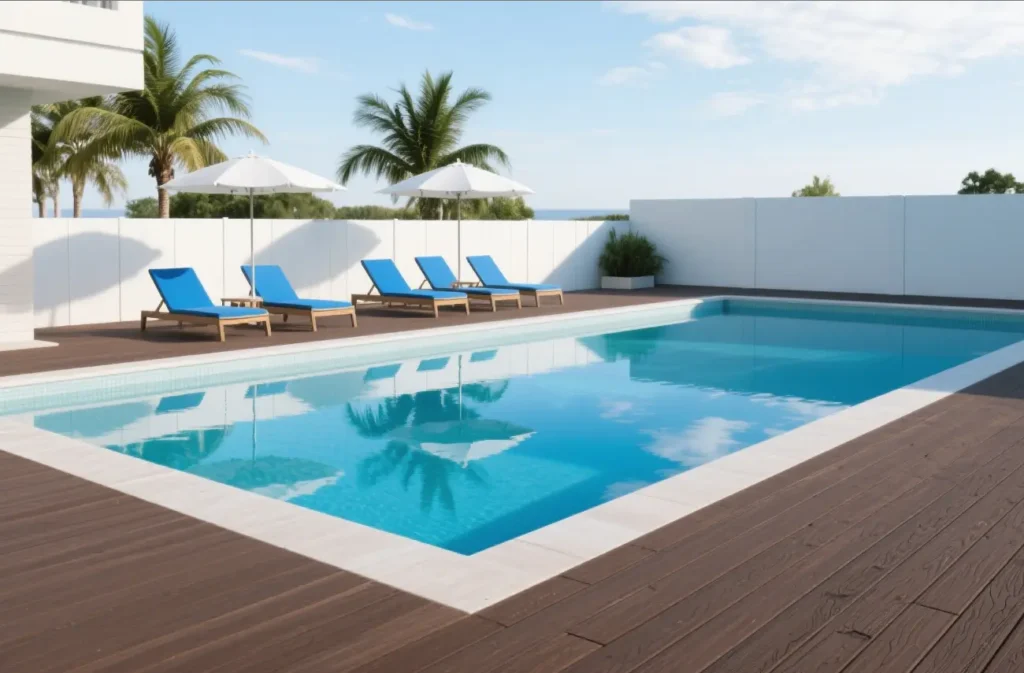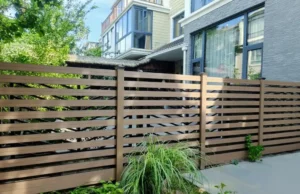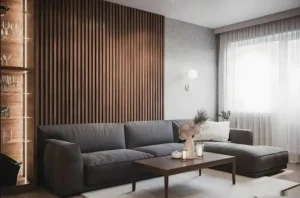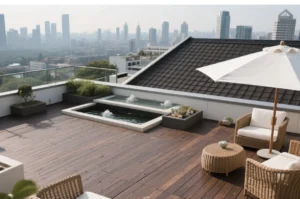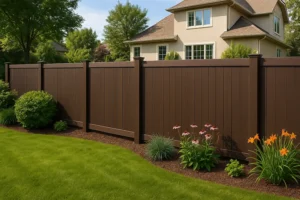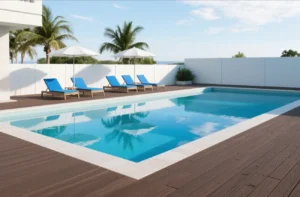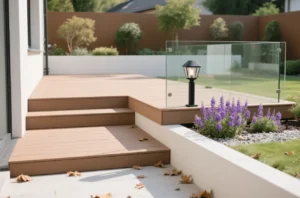WPC decking, short for Wood Plastic Composite decking, is becoming one of the most popular choices for outdoor flooring. Whether you’re building a backyard deck, a rooftop terrace, or a poolside patio, WPC offers a perfect balance of aesthetics, durability, and low maintenance.
In this guide, we’ll explain what WPC decking is, how it’s made, its key benefits, and how it compares to other decking materials like wood and PVC. If you’re planning an outdoor project, understanding WPC deck boards can help you make the right decision.
✅ What Is WPC Decking?
Wood plastic composite decking is a type of composite decking made from a blend of recycled wood fibers and plastic polymers (usually PE or PP). This combination creates a material that looks like wood but performs like plastic.
Unlike traditional wood decking, WPC boards are resistant to moisture, insects, warping, and rot, making them ideal for outdoor use. They come in a variety of colors, finishes, and surface textures—some even mimic the look of natural grain wood.
🔬 How Is WPC Decking Made?
WPC is manufactured through a process called extrusion. Wood fibers (such as sawdust or bamboo powder) are mixed with recycled plastic, bonding agents, and colorants. The blend is heated, molded, and shaped into decking boards.
This process results in:
- Uniform quality and strength
- Consistent texture and color
- Eco-friendly use of recycled materials
🏡 Where Can You Use WPC Decking?
WPC outdoor flooring is suitable for a wide range of residential and commercial applications, including:
- Backyard patios and gardens
- Balconies and rooftop decks
- Poolside walkways and hot tub platforms
- Outdoor restaurants and cafes
- Resort and villa projects
Its waterproof and UV-resistant properties make it a smart choice in both sunny and rainy climates.
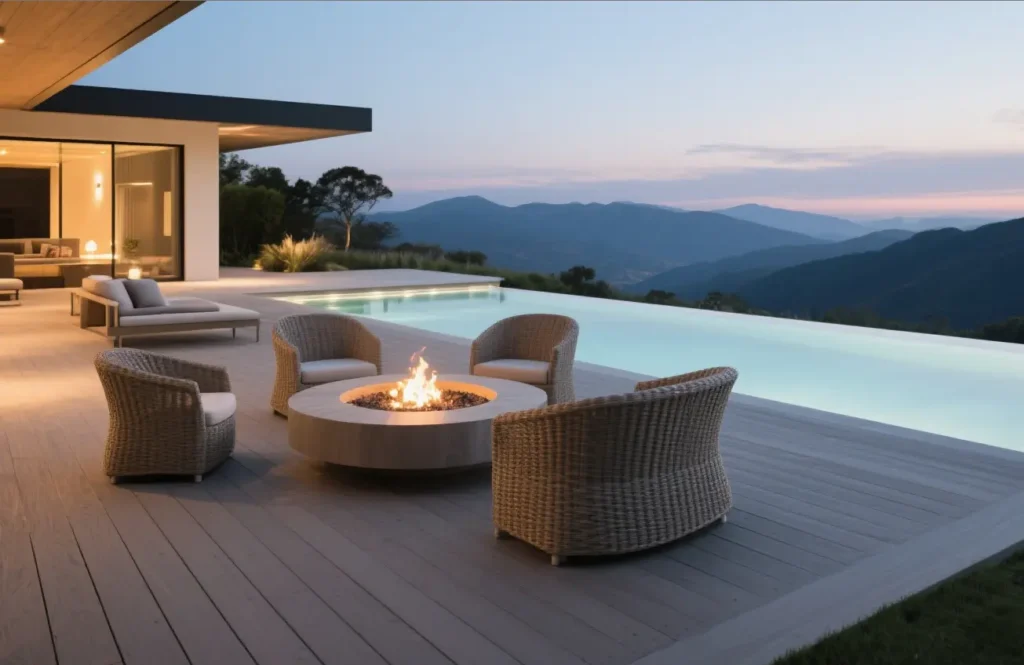
🌟 Key Benefits of WPC Decking
Here’s why more homeowners and builders are choosing WPC over wood or PVC:
1. Low Maintenance
WPC does not require sanding, staining, or sealing. A simple wash with soap and water keeps it clean. No more yearly painting or costly treatments.
2. Weather Resistance
wood plastic composite decking is moisture-resistant, making it ideal for humid or wet environments. It won’t rot, warp, or crack like wood.
3. Durability
The plastic component adds strength and flexibility, ensuring your deck can handle foot traffic, furniture, and exposure to sun or snow.
4. Eco-Friendly
Made from recycled materials, WPC is an environmentally responsible alternative to timber decking. It reduces deforestation and plastic waste.
5. Slip Resistance
Many WPC boards such as WPC fence and WPC wall panels feature textured or grooved surfaces, making them safer to walk on—even when wet.
6. Aesthetic Appeal
WPC boards such as WPC fence and WPC wall panels come in various wood tones, surface patterns, and finishes, providing a high-end look without the maintenance of real wood.
🔧 WPC Decking vs. Traditional Wood
| Feature | WPC Decking | Traditional Wood |
|---|---|---|
| Maintenance | Low | High (requires sealing, staining) |
| Waterproof | Yes | No |
| Insect-Resistant | Yes | No (subject to termite damage) |
| Color Fading | Minimal | Yes |
| Lifespan | 15–25 years | 5–10 years (treated) |
| Eco-Friendliness | Recycled materials | Natural resource use |
WPC offers longer life, less upkeep, and better long-term value.
🛠️ Is WPC Decking Easy to Install?
Yes. composite wood decking often features click-lock systems or hidden fasteners, making it suitable for DIY installations.
It can be installed on:
- Concrete slabs
- Joist frameworks
- Pedestal supports for rooftops
Remember to allow for expansion gaps and proper drainage to maximize lifespan.
👉 For step-by-step guidance, read our full WPC decking installation guide.
🧼 How to Maintain WPC Decking
Maintenance is simple:
- Sweep away debris regularly
- Clean with mild detergent and water
- Avoid using abrasive tools or high-pressure washers
- Check joints and fasteners yearly
Unlike wood, WPC does not need sanding or re-coating—ever.
📊 Types and Styles of composite wood Decking
You can choose from a range of WPC deck boards types:
- Hollow vs. solid boards (hollow is lighter and cheaper; solid is stronger)
- Co-extruded WPC with outer protective layer (fade-resistant and stain-proof)
- Textured finishes such as embossed woodgrain or grooved surfaces
- Multiple color tones including teak, grey, walnut, and coffee
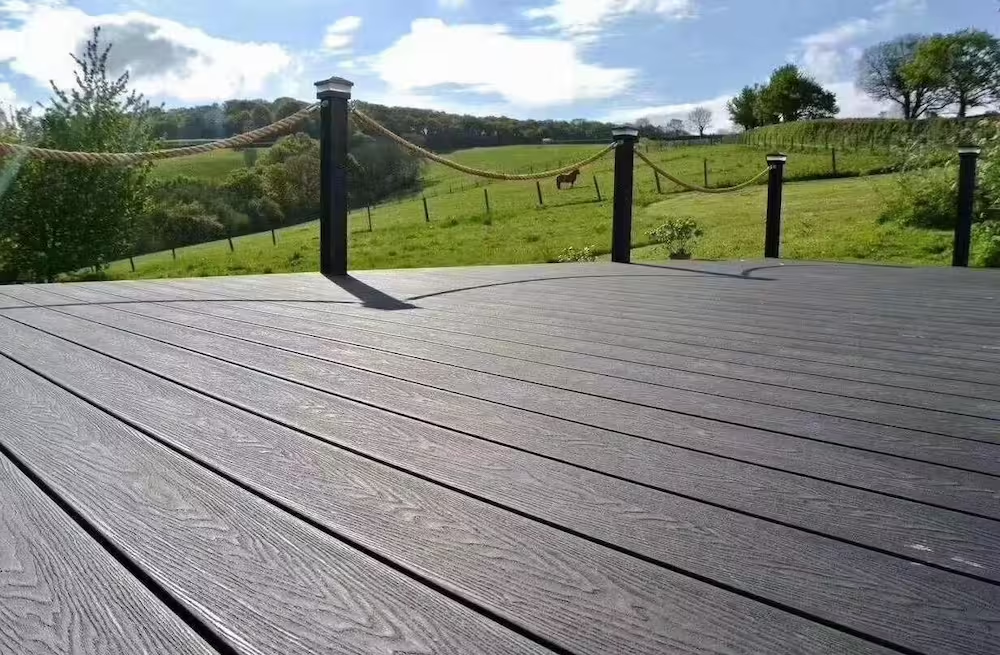
♻️ Is wood plastic composite decking a Green Choice?
Absolutely. WPC is made from:
- Recycled plastic waste (like bags, bottles)
- Reclaimed wood fibers (like sawdust)
- Free from formaldehyde and low VOC emissions
It’s a sustainable building material that supports green construction and reduces environmental impact.
❓ FAQ: Common Questions About WPC Decking
Q: Does WPC outdoor flooring get hot in the sun?
A: Like most outdoor materials, it can warm up, but less than pure plastic or metal decking.
Q: Can WPC be used around pools?
A: Yes. Its anti-slip surface and waterproof structure make it ideal for pool decks.
Q: How long does WPC decking last?
A: With proper installation and care, it can last 15–25 years.
✅ Conclusion
Plastic wood decking is a modern, practical, and eco-friendly solution for outdoor flooring. It combines the charm of wood with the strength and longevity of plastic, without the maintenance headaches.
If you’re searching for durable outdoor decking, WPC may be your best investment.

